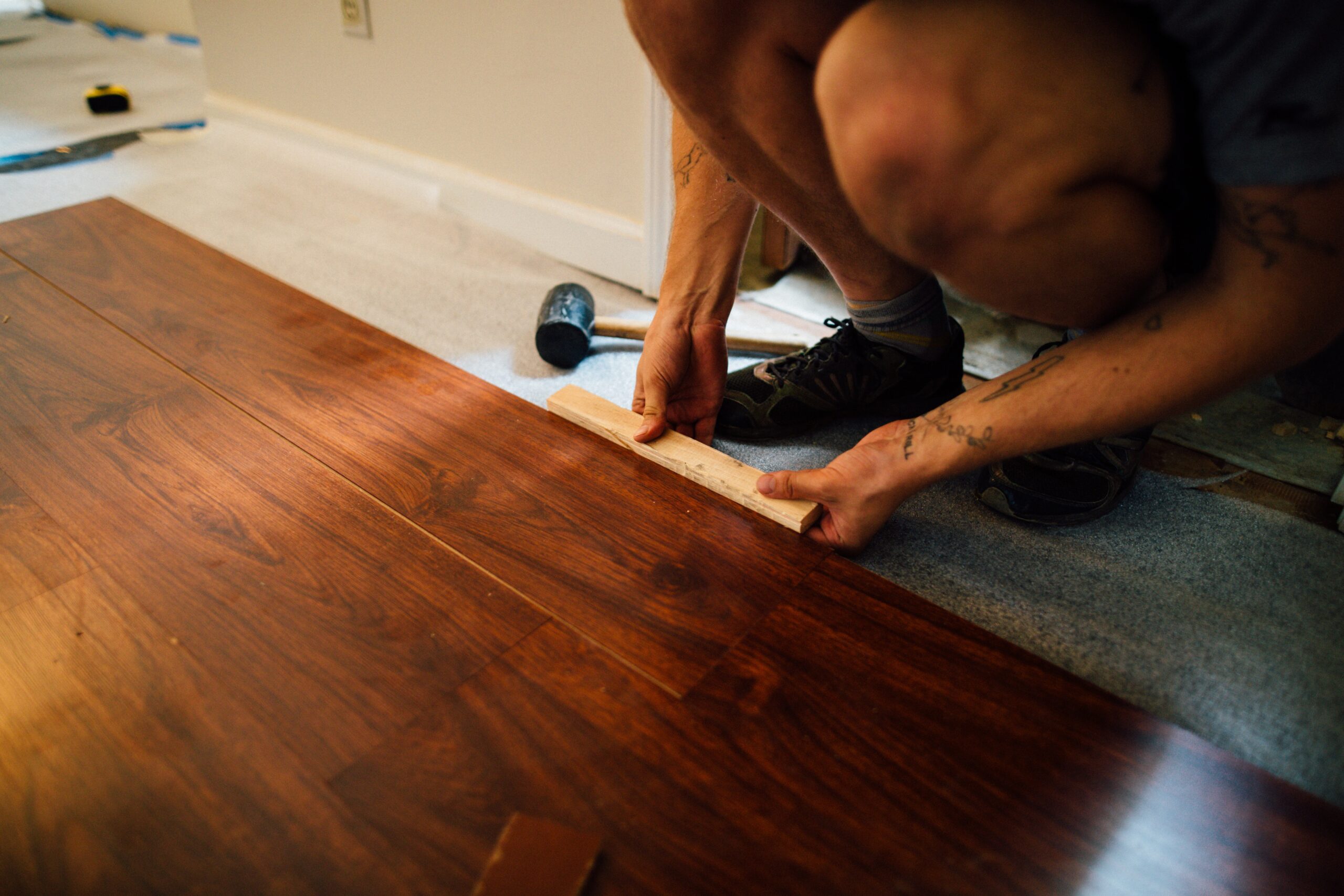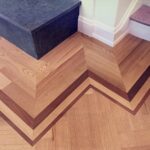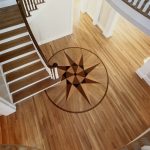Homeowners have many big decisions to make when purchasing or renovating a home. There are hundreds of details and design choices to consider, and flooring choices are right at the top of the list for impact and importance. Before you decide what color your mailbox should be, your home’s flooring needs must be figured out. Laminate flooring vs hardwood… what will work best in your home?
As Boston hardwood floor installation experts, we hear some questions quite frequently. One question we hear a lot from people deliberating on new flooring options is “What’s the difference between laminate flooring vs hardwood flooring?”
Hardwood floors have a few different imposters, one of which is engineered hardwood and another being laminate. And no, we don’t necessarily mean the kind you roll out. That is one type of laminate. Another also includes the kind you “click” in, which has become more popular in recent years.
In this article, we are going to look at what distinguishes laminate flooring vs hardwood flooring. We will talk about the benefits of each and the shortcomings of each as well. We will reserve all of our biases towards hardwood floor installation as much as we can.
Laminate Flooring
Laminate flooring is a floor covering made from a hybrid of synthetic materials. Laminate flooring is typically engineered to appear like real hardwood and comprises three layers.
The top layer is the wear layer. It’s a hard-transparent plastic composition that seals the image layer in and protects the flooring from water and other environmental factors. The image layer is a printed material that is sometimes made to emulate real wood, sealed under the transparent wear layer and above the core layer. A wood-chip composite fills the core layer of the laminate flooring, and it’s the densest layer of the flooring, around half an inch thick.
Laminate flooring was invented in Sweden in the late 1970s and became popular as a cheaper alternative to real hardwood flooring. Over the years the technology has gotten more sophisticated, especially on the top image layer of laminate flooring.
Laminate flooring is always installed as a floating floor. This means that laminate flooring is never nailed down to the sub-floor. There is a foam underlayment underneath the laminate flooring which is joined by interlocking joints or glue. Once all the laminate flooring is assembled together on top of the underlayment, it becomes one heavy solid piece of floor that is not supposed to slide around.
Bring New Life Back To An Older Floor – Learn About Our
Hardwood Floor Refinishing Services
Laminate Flooring vs Hardwood: What’s the Difference?
Laminate flooring is cheaper to buy and install than real hardwood floors. The pricing of laminate flooring is what made it popular in the first place. It’s lightweight and snaps together, so its installation is DIY-friendly. Also, laminate flooring is not susceptible to warping or having seams opening up during periods of extreme humidity. It’s scratch-resistant, which can be ideal for families with small children and lots of pets.
However, laminate flooring is highly susceptible to standing water. It’s water-resistant to a point, but after the water has over-saturated the top layer and reaches in the inner layers of the flooring material, it’s not able to recover.
The wood-chip composite within the base layer of the laminate flooring acts like a cork or sponge, and once it’s full of water, it’s almost impossible to dry it out. For this reason, laminate flooring should not be installed in laundry rooms, bathrooms, or rooms with sump pumps or floor drains.
Of all the differences that distinguish laminate flooring vs hardwood flooring, real solid wood is THE BIGGEST difference between the two.
As the name hardwood implies, real hardwood flooring is made from 100% naturally occurring timber that is cut and sourced for flooring work. Laminate flooring has no solid wood in it, and at most, it has compressed wood chips in its core layer.
A real hardwood floor, unlike laminate flooring, can be restored and refinished if desired. Hardwood is tough and resistant, and even scratches or water damage can be repaired.
If you decide you don’t like the stain on your hardwood floor, you can bring new life by hiring a professional for hardwood floor refinishing services.
Regardless of the species of wood, whether oak, hickory, maple, or cherry, it can all be restored to look as good as new after years of wear. Once laminate flooring is worn out, and the top layer is faded, the whole floor needs to be replaced. Refinishing is not an option.
A real hardwood floor has a soft and more natural feel underfoot. As laminate flooring is synthetic, it’s slightly harder underfoot and can make some harsh sounds when walked on.
What Your Current Needs Are
Of course, we are biased towards hardwood flooring, and how couldn’t we be!?
But, that doesn’t mean that we are blind to the uses and circumstances when laminate flooring would be appropriate for some homeowners over hardwood flooring solutions.
As laminate flooring is a cheaper solution, it’s often better for homeowners on a limited budget. Or, perhaps some homeowners will use laminate flooring as a temporary flooring solution before a home renovation.
Real hardwood flooring is more valuable to buyers when selling a home, but it may not be worth it to install hardwood flooring into a home that is not going to be lived-in long or sees lots and lots of harsh wear and tear. It may not make the most sense to install some beautiful oak wood flooring in a home with five dogs and eight kids – all with a proclivity for chasing each other on roller skates.
If you’re curious about hardwood flooring solutions and services, please contact us.
We pride ourselves on being honest with our customers, and we will be the first to tell you why laminate flooring vs hardwood flooring might be the best solution for your circumstances!







